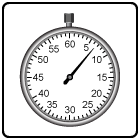


3 scores max per player; No foul language, show respect for other players, etc.
Name | Score | Date | ||
|---|---|---|---|---|
| 1 | ||||
| 2 | ||||
| 3 | ||||
| 4 | ||||
| 5 | ||||
| 6 | ||||
| 7 | ||||
| 8 | ||||
| 9 | ||||
| 10 |
This is a timed game. Your final score is equal to the total score minus time taken.
Game: CHOOSE OR LOSE
Aim: Choose the right answer; beat the clock
Method:
You start the game with 50 points. Each question has 2 to 4 answers. Select the correct answer before your time runs out to score points. Right answers are +10, wrong answers are -2, out of time is -5.
This is a timed game. Your final score is equal to the total score minus time taken.

anonymous 😂😍😂
"Count down in steps of 5 to -100"
CHOOSE OR LOSE game to practice
'Using lines of best fit' for 7th grade
7th grade / Statistics / Two variables / Scatter graphs / Using lines of best fit
Scatter graphs: use line of best fit to predict values
Scatter graphs use points to represent values that correlate the relationship between two variables. The scatter graph will indicate the degree to which the two variables are linked or related. If the variables are linked, you will be able to draw a line of best fit. The more strongly two variables are correlated, the more closely the points will follow the line of best fit.
One of the benefits of being able to draw a line of best fit is that it enables you to predict values for one of the variables that you don't have a data point for. To do so, you must first locate the independent variable on the x-axis. Draw an imaginary vertical line from that value up to the line of best fit. To get the y-axis value, draw an imaginary horizontal line from the line of best fit to the y-axis to read off the value.
It should be stressed that these predicted values will always be approximations, just as the line of best fit is usually an approximation relative to the actual data which tends to contain more variability in it than can be accommodated by a line of best fit.
In this topic you are asked to use the provided line of best fit to predict values for the dependent variable (on the y-axis) given a value for the independent variable (on the x-axis).
With our Choose or lose math game you will be practicing the topic "Using lines of best fit" from 7th grade / Statistics / Two variables / Two variables. The math in this game consists of 16 questions that ask you to in each instance use the given line of best fit to predict approximate values.

Our CHOOSE OR LOSE game is a simple activity to help secondary math learners and will improve the speed at which you can solve problems in the given topic. It does not rely on the learner typing in the answer. Rather, the learner must choose the correct answer from a list of 2, 3 or 4 similar answers.
CHOOSE OR LOSE encourages faster problem-solving for common and vital secondary math topics. CHOOSE OR LOSE is a timed game with a leaderboard for each topic at each of the 4 levels on offer. You can play the game with or without audio and robots.
UXO * Duck shoot * The frog flies * Pong * Cat and mouse * The beetle and the bee
Rock fall * Four in a row * Sow grow * Choose or lose * Mix and match

Latest leaderboard entries: Choose or lose




How to play Choose or lose to practice
'Using lines of best fit' for 7th grade

Our CHOOSE OR LOSE game asks the learner to click on the correct answer from a selection of possible answers before the clock runs down.
- Click on PLAY to start.
- You are presented with a topic question, then a list or grid of 2 to 4 possible answers (depending on the topic you have chosen).
- You must select the correct answer by clicking on it before the clock counts down.
- You have 10 seconds in total to answer each question.
- The clock starts ticking down 5 seconds after the answers have appeared.
- To hear the question again, click / tap on the question box.
- The browser will speak the potential answers on rolling-over them.
- A correct answer gains you 10 points.
- A wrong answer loses you 2 points.
- A time-out loses you 5 points.
- A score is kept of correct answers against number of answers.
- The game is timed, and your final score (points earned minus time taken) is given at the end of the game. Top 10 scores for a topic get you a place on the leaderboard.










